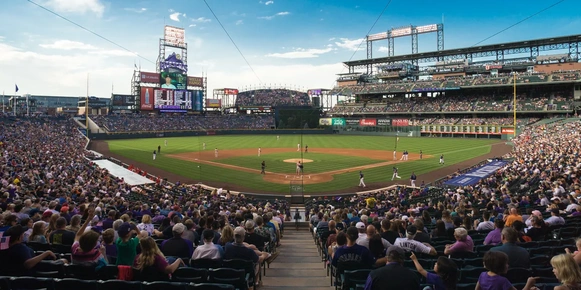When Did the Dodgers Come to LA?
- Sports
by Gametime

This article was originally published on and was updated on .
Nowadays, the LA Dodgers are one of the most successful and star-studded teams in the big leagues. LA Dodgers tickets are more in demand than ever, especially after the team’s 2020 World Series title and the promise of more championships in the years to come. Of course, we know that the Dodgers weren’t always located in Los Angeles. The franchise got its start in Brooklyn and once overshadowed the Yankees as the most iconic baseball team in New York? But what happened? When did the Dodgers move to LA, and why did they relocate across the country? Let’s take a look at the story behind the club’s transcontinental move.
A History Lesson
First, it’s important to look at the history the Dodgers had in Brooklyn. The franchise played its inaugural season in 1883 when they were known as the Brooklyn Grays. The franchise underwent several name changes over the years, going by the Grays, Atlantics, Bridegrooms, Grooms, Superbas, Robins, and Trolley Dodgers before making the permanent change to Dodgers in 1932. In the late 1930s, they became one of the top teams in baseball, becoming a regular contender in the National League. Between 1941 and 1953, the Dodgers went to the World Series five times, losing to the New York Yankees on each occasion before finally getting the better of the Yankees in the Fall Classic in 1955 to win the first championship in franchise history.
Under New Ownership
In many ways, the team’s journey to Los Angeles started in 1950 when Walter O’Malley became the majority owner of the team, purchasing enough shares from Branch Rickey to make the decisions. O’Malley’s biggest priority was to secure a new stadium for the Dodgers. His desire for a new stadium wasn’t purely financial. In fact, the Dodgers were the only National League team that turned a profit between 1952 and 1956. Rather, O’Malley recognized that the iconic Ebbets Field was old and outdated. It was too small, and with the rise of automobiles, there wasn’t enough parking for the fans who wanted to attend games.
The Vision
O’Malley was nothing if not ambitious in his vision for what the team’s new stadium would look like. He wanted to build a 55,000-seat stadium with a dome and a movie theater on the premises. Such a stadium would have been groundbreaking and trend-setting at the time, so naturally, it was met with opposition. His plan was to build a stadium on the patch of land in Brooklyn, where the Barclays Center is currently located.
However, O’Malley’s problem is that he had financing for the stadium but not for the land where he wanted to put it. His plan was to convince New York public planning czar Robert Moses to let him have that plot of land condemned so that he could purchase the land for below market value. But Moses refused to go along with O’Malley’s plan and make it easier for the Dodgers to get a new stadium, reportedly telling O’Malley: “If you want the land so bad, why don’t you purchase it with your own money.”
Rather than give O’Malley the land he wanted, Moses preferred the Dodgers to move from Brooklyn to Queens. His plan was to give the Dodgers a piece of land that’s close to where the New York Mets would eventually build Shea Stadium, believing it would be better for New York traffic patterns. But O’Malley didn’t go for that plan, and a nearly decade-long staredown between O’Malley and Moses yielded little progress.
Exploring Options
When it was clear that New York wasn’t going to do him any favors, O’Malley began exploring other options. Around this time, the rise of commercial air travel made it possible to locate pro sports franchises in different parts of the country, specifically the West Coast. Meanwhile, the city of Los Angeles was looking to lure a major league team. The city initially targeted the Washington Senators, who ultimately moved to Minnesota.
After failing with the Senators, Los Angeles made an appealing pitch to O’Malley, offering him plenty of public lands to build a stadium, not to mention the chance for O’Malley to buy the land and own the ballpark, giving him complete control over everything. It was a deal too good for O’Malley to pass up, especially given his lack of progress with Moses and the city of New York.
The Meeting
At the same time that O’Malley was looking for a new stadium, the New York (baseball) Giants were also exploring a move to the West Coast. Giants owner Horace Stoneham also found LA appealing, although O’Malley eventually convinced him that San Francisco would be a better option so that the two clubs were no longer competing in the same city.
May 28, 1957, is the day that has gone down in infamy for New York baseball fans. On that date, the National League owners voted to allow the Dodgers and Giants to leave New York. The caveat was that either both move or neither one gets to move. Both clubs agreed to move, making the 1957 season the last one in New York for both the Dodgers and Giants. Fittingly, the Giants and Dodgers met at the Los Angeles Coliseum to open the 1958 season, with both clubs now located on the West Coast. The LA Dodgers won the game 6-5, starting a new era of West Coast baseball. Meanwhile, 3,000 miles away, the hearts of New York baseball fans were breaking.


